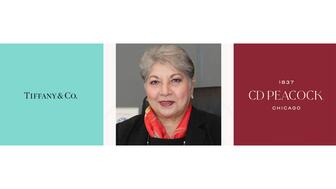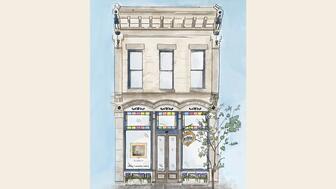Consumer Confidence Slips in June Amid Rising Prices
The costs of food and groceries remained a top concern, followed by the labor market and U.S. politics.

The Conference Board’s consumer confidence index fell to 100.4 in June from a downwardly revised 101.3 in May.
Similar to last month, June’s write-in responses showed high prices, especially for food and groceries, continued to impact consumers’ views of the economy, followed by the labor market and U.S. politics.
“Consumers expressed mixed feelings this month: their view of the present situation improved slightly overall, driven by an uptick in sentiment about the current labor market, but their assessment of current business conditions cooled,” said Dana M. Peterson, chief economist at The Conference Board.
“Meanwhile, for the second month in a row, consumers were a bit less pessimistic about future labor market conditions. However, their expectations for both future income and business conditions weakened, weighing down the overall Expectations Index."
As for election season, the share of respondents who said the 2024 election would impact the economy was low in comparison to write-ins in June 2016 and slightly higher than in 2020.
“Confidence pulled back in June but remained within the same narrow range that’s held throughout the past two years, as strength in current labor market views continued to outweigh concerns about the future,” said Peterson.
“However, if material weaknesses in the labor market appear, confidence could weaken as the year progresses.”
The decline in confidence from May to June was attributed mainly to consumers aged 35 to 54.
Those under 35 and those 55 and older saw an improvement, though there was no clear pattern according to income groups, said Peterson.
On a six-month moving average basis, confidence continued to be highest among the youngest and wealthiest consumers, it found, including those under 35 and those making more than $100,000.
The average 12-month inflation expectations declined slightly to 5.3 percent from 5.4 percent in May.
The Present Situation Index, which measures consumers’ current view of business and labor market conditions, rose to 141.5 in June from 140.8 in May.
Consumers’ view of current business conditions was less optimistic in June, with the percentage of respondents who said current business conditions are “good” down to 20 percent from 21 percent in May, while those who said conditions are “bad” was flat at 18 percent.
Consumers’ view of the labor market improved in June, with those who said jobs were “plentiful” up to 38 percent from 37 percent in May, while those who said jobs were “hard to get” was flat at 14 percent.
The Expectations Index, which measures consumers’ outlook for income, business, and labor market conditions in the near future, fell to 73 from 74.9 in May.
Notably, an Expectations Index reading below 80 often signals a recession ahead, said the Conference Board. It has been below 80 for five consecutive months.
Consumers’ view of the short-term business conditions outlook was more pessimistic in June.
The percentage of respondents who expect business conditions to improve was down to 13 percent from 14 percent, while those who expect conditions to worsen was unchanged at 17 percent.
Consumers’ assessment of the short-term labor market outlook in June was slightly more positive.
The percentage of respondents who expect more jobs to be available was flat at 13 percent, while the number of respondents who expect fewer jobs to be available was down to 17 percent from 19 percent.
Consumers’ assessment of their short-term income prospects was more negative.
The number of respondents who expect their incomes to increase was down to 15 percent from 18 percent in May, while those who expect their incomes to decrease was flat at 12 percent.
Consumers were also less optimistic about their family’s current financial situation, a measure not included when calculating the Present Situation and Expectations Index.
Their view of their family’s future financial situation was unchanged.
The “Consumers’ Perceived Likelihood of a U.S. Recession Over the Next 12 Months” declined in June after rising in April and May.
Consumers were optimistic about the stock market, however, with 48 percent expecting stock prices to increase over the year ahead, 24 percent expecting a decrease, and 28 percent expecting no change.
The number of consumers expecting higher interest rates over the next twelve months dropped to 53 percent, its lowest level since February.
Purchasing plans for homes were unchanged in June and remained historically low, said the Conference Board. Plans to buy cars were also at a standstill.
Buying plans for most big-ticket appliances and smartphones were up slightly, while fewer planned to buy a laptop or PC.
The number of respondents planning a vacation over the next six months continued to increase, staying above June 2023 levels.
Notably, more people plan to travel by car than by plane.
The number of consumers planning to go on vacation is about 10 percentage points lower than it was pre-pandemic.
The Latest

In the recent multi-shipment seizure, CBP also found counterfeit Audemars Piguet, Moncler, and Chrome Hearts items.

Helzberg’s Chief Retail Officer Mitch Maggart shared details about its tests of a new store concept rooted in an elevated luxury experience.

Jewelers of America execs and National Jeweler editors discuss tariffs, the sky-high gold price, and the engagement that broke the internet.

How Jewelers of America’s 20 Under 40 are leading to ensure a brighter future for the jewelry industry.

The luxury goods company said founder Ippolita Rostagno will remain at the brand’s helm.


Laura Burdese, who joined the Italian luxury brand in 2022, will take on the role in July.

The National Jeweler editors revisit the most noteworthy industry happenings and design trends from 2025.

Roseco’s 704-page catalog showcases new lab-grown diamonds, findings, tools & more—available in print or interactive digital editions.

Need a gift for the cat lover who has everything? Look no further than our latest Piece of the Week.

It purchased the “Grosse Pièce,” an ultra-complicated Audemars Piguet pocket watch from the ‘20s, for a record-breaking price at Sotheby’s.

The lab-grown diamond grower now offers custom engagement and fashion jewelry through its Kira Custom Lab Jewelry service.

Chandler got his start at Michelson Jewelers and has served as DCA president and CEO since 2001. He will retire at the end of the month.

The boutique is slated to open this week inside Terminal 8, offering pre-owned Rolex watches and more to international travelers.

Sponsored by Digital Monitoring Products

The special-edition egg pendant ingested in a New Zealand jewelry store was recovered after a six-day wait.

Associate Editor Natalie Francisco plays favorites with Piece of the Week, selecting a standout piece of jewelry from each month of 2025.

The “Love and Desire” campaign is inspired by the magic that follows when one’s heart leads the way, said the brand.

Two awardees will receive free tuition for an educational course at the Swiss lab, with flights and lodging included.

Berta de Pablos-Barbier will replace Alexander Lacik at the start of January, two months earlier than expected.

Sotheby’s held its first two jewelry sales at the Breuer building last week, and they totaled nearly $44 million.

Winners will receive free registration and lodging for its fourth annual event in Detroit.

Here are six ideas for making more engaging content for Instagram Reels and TikTok, courtesy of Duvall O’Steen and Jen Cullen Williams.

The honorees include a notable jewelry brand, an industry veteran, and an independent retailer.

Carlos Jose Hernandez and Joshua Zuazo were sentenced to life without the possibility of parole in the 2024 murder of Hussein “Sam” Murray.

Yood will serve alongside Eduard Stefanescu, the sustainability manager for C.Hafner, a precious metals refiner in Germany.

The New Orleans jeweler is also hosting pop-up jewelry boutiques in New York City and Dallas.

Set in a Tiffany & Co. necklace, it sold for $4.2 million, the highest price and price per carat paid for a Paraíba tourmaline at auction.



























